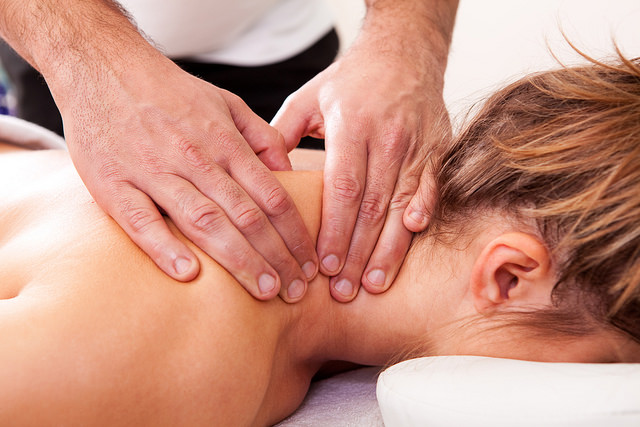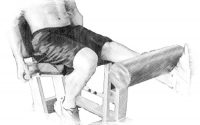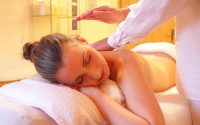Massage therapy and exercise are more effective than pain education for chronic neck pain
Neck pain is a common musculoskeletal complain, especially in office workers. Massage and exercise are commonly prescribed as a treatment. The short and long-term effect of massage and stretching & strengthening treatments as compared to pain education has not been well studied. Now, a large study from Sweden, has provided an evidence on the effectiveness of massage, strengthening and combined therapy on neck pain. The study was published in Feb 2020 issue in Musculoskeletal Science and Practice found that massage and exercise are more effective than pain education in relieving pain intensity, in the short term.
The study called the Stockholm Neck (STONE) randomized controlled trial recruited 619 adults with subacute or persistent neck pain. Participants were allocated to massage (n = 145), exercise (n = 160), combined therapy (n = 169) or advice (n = 147).
The massage therapy group received deep tissue techniques targeting the painful area (upper back and neck, and if indicated, also jaw and/or chest). Each session is 45 min, including 10 min of history taking.
The exercise group received supervised strengthening and stretching exercises therapy, which target muscles of the neck, shoulder and chest. Participants were instructed to repeat the exercises at home once or twice per week. Each session is 45 min, including 10 min of history taking.
The combined group received exercise therapy followed by massage with 25 min to each modality instead (50 min in total). Additional 10 min were used for history taking.
To compare the effectiveness of deep tissue massage, supervised strengthening and stretching exercises, and a combined therapy (exercise followed by massage) (index groups), with advice to stay active (control group).
The control group was advice to stay active. Sessions with the therapist aimed to personalize the education and discussion to the participant’s condition. Participants were informed about when to seek care. Sessions lasted 30 min, including 10 min for history taking.
Massage, Exercise and Combined therapy groups received up to 6 sessions, each 1 week apart. Advice group received up to 3 sessions. The actual average number of visits was 6 for massage, 5 for exercise and 5.5 for massage and exercise, and 2.5 for advice group.
Primary outcomes were minimal clinically important improvements in neck pain intensity and pain-related disability based on adapted questions from the Chronic Pain Questionnaire. Secondary outcomes were perceived recovery and sickness absence. Outcomes were measured at 7, 12, 26 and 52 weeks after the last treatment.
The study found
- improvement in pain intensity for massage as compared to advice at 7 and 26 weeks.
- Combined therapy is also better compared to advice at 7 and 12 weeks.
- Exercise showed higher improvement of pain intensity at 26 weeks.
- At 12-months follow-up, all treatment groups were not more effective than advice to stay active in terms of change in pain intensity or pain-related disability.
- However, perceived recovery was higher in the treatment groups than in the advice group at all follow-ups.
- There are no consistent differences in pain related disability or sickness absence.
Treatment groups were effective and showed clinically important improvement in pain intensity in the short term. They also have favourable perceived recovery in the short and in the long term compared to advice to stay active. The authors added that in individuals with persistent pain, self-perceived recovery might not necessarily imply the resolution of pain. Rather, the participants may have learned how to cope with pain, redefined what it means to be healthy or reached an acceptable quality of life. The observed effects might also be due to mechanisms beyond immediate deep tissue stimulation and the progressive muscle strengthening. The treatment could induce relations of empathy in patient-therapist interaction that could lead to lower anxiety and distress.
The study showed the effectiveness of massage and stretching/strengthening treatments on chronic neck pain in the short term. It is quite wonderful that in some cases, the pain relief can last up to 6 months. It is not expected that massage and exercise will show an effect after 1 year.


